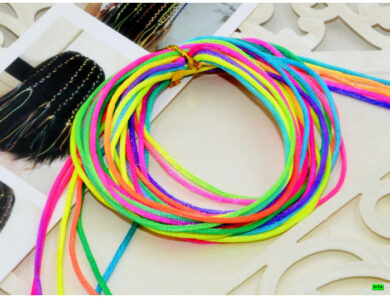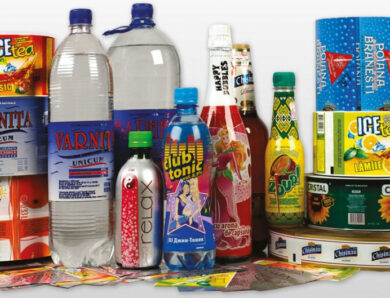Sand for sandblasting: abrasive selection, cost, factions
The question is, which sand is better to choose for sandblasting, has been relevant for many years. This technology, by means of which carry out cleaning of surfaces of old coverings and various pollution, but also prepare them for further processing, was developed and introduced into the industry in the 19th century.
Product before and after sandblasting
If we talk about the technology of sandblasting, then its essence is, that by means of the pneumatic device on a surface, the cleaned jet of abrasive mix is fed, the speed of which can be from 300 to 800 km / year. The use of such processing, for which until recently only sand was used, allows you to effectively clean not only metal surfaces, but also designs, made of other materials.
Materials for sandblasting
From a certain point in the development of sandblasting technology it became clear, that improving the performance of the equipment used for these purposes can increase the efficiency of the process. That is why experts began to think about it, which sandblasting sand is best to use, and seriously engaged in improving the characteristics of such consumables. The result of this work was that, that a large variety of abrasive materials for sandblasting has appeared on the modern market, to decide on the choice of which a person has no experience is quite difficult.
General scheme of the sandblasting machine
For a long period of time, only quartz sand was used to perform abrasive treatment. With the development of technology for the implementation of such works began to use new substances, which are superior to ordinary sand in their performance and safety. What is characteristic, quartz sand is no longer used in many countries for sandblasting, due to safety requirements.
Abrasive sand, hitting a metal surface at high speed, turns to dust, which, affecting the human respiratory system, can lead to the emergence and development of such severe lung disease, as silicosis. This saw, spreading around the treatment area, which has a detrimental effect not only on the operator of the sandblasting machine, but also on people, which are even at a considerable distance from the place of work.
Specialized sandblasting shop
Ordinary sand for sandblasting, in addition, has a number of other disadvantages, which include the following.
- Due to the low hardness of ordinary quartz sand can not effectively treat the surface of structures made of many materials.
- The speed of sandblasting when using ordinary sand is quite low, which leads to increased abrasive consumption.
- Quartz sand can be reused after sandblasting, since most of it due to the low strength of the particles turns into dust.
Approximate consumption of sand
Despite these shortcomings, quartz sand continues to be actively used for sandblasting, which is facilitated not only by affordable price, but also a number of other advantages of its application. These include the following.
- Waste sand, from which a large fraction was isolated by sieving, can not only be reused, but also to resell, pre-packed in bags.
- The low strength of the sand contributes to this, that you can not worry about causing irreparable damage to the treated surface in that case, if the size of the fraction is chosen incorrectly. This quality of abrasive material is especially relevant in this case, if the surfaces of the products are treated, made of soft non-ferrous metals.
- When using such sand, you can use any type of nozzle, not worrying about it, that they are subject to active wear. As for the nozzles, made of the hardest materials (boron carbide and tungsten carbide), then the rate of wear when working with ordinary sand is several times lower, than when using other abrasives.
- Almost any sand can be used as such an abrasive material (river, marine, career, desert), which must be pre-dried to the required humidity and sieved, separating large factions from it.
- The use of any sand, even with the need for its preliminary preparation significantly reduces the cost of sandblasting.
- From the total mass of sand you can select particles of different sizes, which allows you to optimally select an abrasive for surface treatment of a certain type.
Different size of the sandblasting fraction allows you to perform different types of work. The main thing is not to make a mistake with the choice!
As mentioned above, different materials can be used for sandblasting, which can be represented by one of the following types:
- ordinary sand, which is also called river; such sand must be sieved before use;
- sand, which is specially mined in quarries; such sand, which grain is less, than the river, in addition to sieving also requires pre-washing;
- quartz sand for industrial use, which is obtained from the river method of its sieving and separation into different fractions; due to the additional labor costs of this sand is much higher (on average three times), than the cost of ordinary river;
- sand, which is obtained by crushing quartz rocks; thanks to this technology, the sand particles have an acute shape, which makes this material more effective in sandblasting (its characteristics contribute to that, increasing processing speed and, in accordance, its costs are reduced).
If necessary, to avoid deformation of the substrate, the surface is treated using a plastic abrasive
Solving issues, which sand is best suited for surface treatment of a certain type, should be borne in mind, that other consumables for sandblasting machines are presented on the modern market. These include:
- Cooper slag and Nickel slag - abrasives, who receive, separating them from waste copper and nickel production; in their characteristics of strength and hardness of Nickel - and Cooper slag is superior to ordinary sand, and the price can be compared with it;
- fraction, made of steel and cast iron - a durable material, which in addition to effective cleaning of the surface has a strengthening effect on it, as after forging; due to its high strength, which exceeds the similar characteristic of sand ten times, steel and cast iron fraction also differs in more expensive price (usually use a round fraction, but for faster and rougher cleaning can be used and chipped);
- pomegranate sand, which is much harder than quartz, but compare with it in its low strength; use such material, which has a high cost, mainly for the separation of metal products by hydraulic cutting;
- electrocorundum - this material, which is a crystalline form of alumina, is considered the hardest abrasive; due to the high hardness of electrocorundum can be used for sandblasting of surfaces of any type, with, which is important, its particles are practically not damaged, and after sieving it can be reused.
Sand of different fractions
For stone processing, glass and ceramics are better suited electrocorundum grade 14A or 25A
How to choose the right consumables
Of course, that sandblasting of different types of surfaces requires different consumables. The right choice can not only increase the efficiency and speed of processing, but also save a lot on its implementation. To you, what consumables for the sandblasting machine to choose, are influenced by the following factors.
- The thickness of the coating or contamination layer, which must be removed, as well as its strength. If you choose for a thick and durable layer removable coating or dirt fine abrasive with low hardness, then you can simply not achieve the desired result.
- Hardness of the material of the cleaned basis. For firmer grounds, you should choose a harder abrasive, and for soft - less hard, so as not to damage the treated surface.
- Requirements for the condition of the surface after treatment. If the cleaned surface should have a minimum number of dents and chips, then for its processing it is necessary to choose an abrasive of smaller fraction.
- The required speed of sandblasting. Hard abrasive, whose particles have sharp edges, provides higher processing speed, than similar, but with rounded particles.
- Ability to organize the collection and reuse of abrasives. If this is not possible, then it is more expedient to use inexpensive materials for performance of processing: quartz sand, copper slag and nickel slag.
Comparing the basic parameters of abrasive materials will help you make the right choice
Areas of application of abrasive materials of different types
If you have never encountered sandblasting and have not performed such an operation with your own hands, then for the correct choice of consumables you need to use the following recommendations.
- To clean the old surface and traces of corrosion of the metal surface or facade of the building, you can use pre-dried and sifted sand, which may not be divided into separate factions.
- To give shine to products, made of copper or aluminum, fine sand with a particle size within is perfect 0,3 mm.
- To remove old paintwork, which is firmly held on the base, it is better to use sand with a particle size of 0.3-0.6 mm.
- Edible corrosion marks are perfectly removed with sand, nickel - and Cooper slag with particle sizes of 0.6-1.6 mm.
- With the help of a large fraction abrasive, traces of welding scale are removed, thick bituminous coatings.
- Details of the car body, which must be cleaned and prepared for further painting, processed steel or cast iron shot.
- Products are made of hard metals (alloy steel, titanium, etc.), treated with electrocorundum or pomegranate sand.
- Processing of ordinary glasses (matting, drawing and patterns) performed with pure fine sand of homogeneous fraction, hardened - with the help of electrocorundum (particle size 0.1–0.8 mm).
- Stainless steel fraction or small glass granules are also used to process stainless steel products.
Quartz sand Sun.-050-1 in bags on 50 kg
Average prices for abrasives for sandblasting (data taken for Moscow and the region)
Abrasives for sandblasting are often sold in bags. It should be taken into account, that sand of large and small fraction costs about 10% cheaper, than the abrasive of the middle fraction.
More on the topic:
> Sand with your own hands: drawing, video, manufacturing instructions
> Homemade gun for sandblasting
> Sandblasting chamber with your own hands: drawing, components, collection
In conclusion, we offer a couple of short videos, give answers to questions about that, where to get sand for your sandblasting and how to put it in proper shape before starting work.




